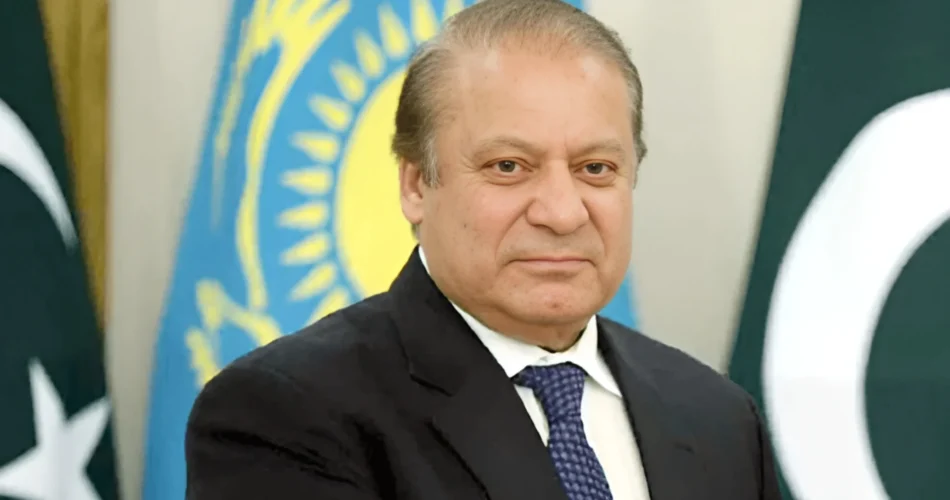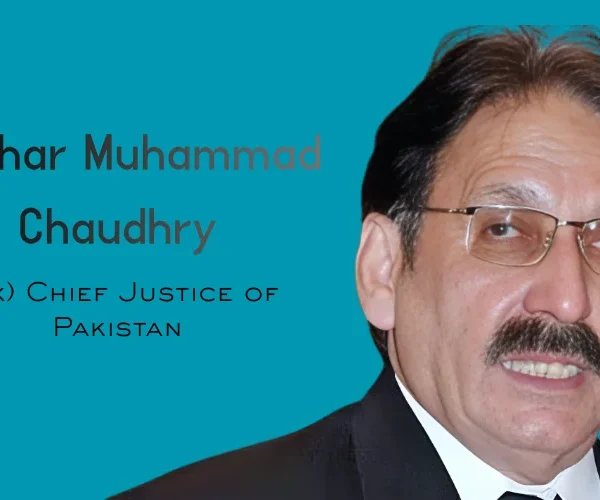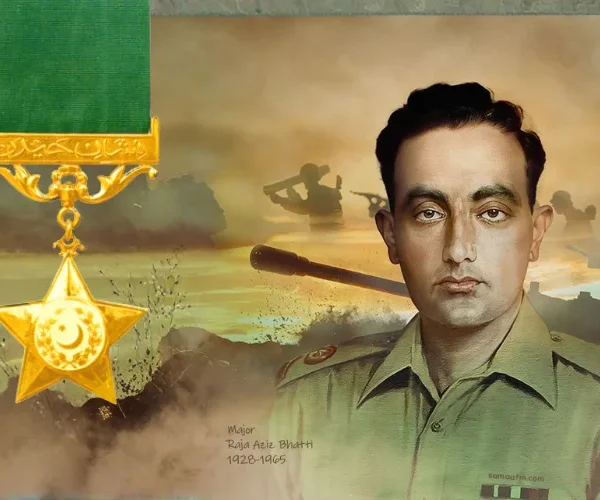Introduction to Nawaz Sharif’s Life
Pakistan has one of the most well-known political figures in Nawaz Sharif. Apart from a political career, he has made a name for himself with entrepreneurial ventures, a cricket passion as well as philanthropic projects. He is the leader of Pakistan Muslim League Nawaz (PML N) and has taken oath of Prime Minister of Pakistan many a times and thus mark his name in Pakistan’s infrastructure and politics.
In this article, we will make an analysis of Nawaz Sharif’s biography, covering early life, education, politics career, family relations, health initiatives, and Nawaz Sharif’s luxury assets. He had great achievements too and we will look into some of the less known things in his life including the agriculture and medical sectors and how rich he became. Everything will be double checked carefully and everything is factual.
Early Life and Education of Nawaz Sharif
Nawaz Sharif (born 25 December 1949, in Lahore, Pakistan) belongs to a business and political family. He was son of his father Muhammad Sharif, who had founded Ittefaq Group of Industries which turned into a main business conglomerate of Pakistan.
Early Education
He got his early education at Saint Anthony’s high School, a prestigious institution of Lahore. Later he attended Government College University (GCU) where he completed the bachelor’s degree in arts & business.
Higher Education
Later on, he did law studies from the University of the Punjab as well. This legal education helped him to have all the knowledge and skills that later would be needed for his political career.
Personal Life and Family Background
Nawaz Sharif was born on December 25, 1949, in Lahore, Pakistan, to a potentially dynastic, influential family, itself well known for business and political leadership. He is son of Mian Muhammad Sharif, who established the Ittefaq Group, an industrial conglomerate of Pakistan, and Begum Shamim Akhtar. The Sharif family migrated from Anantnag in India’s Jammu and Kashmir to Pakistan’s Punjab around the time of independence in 1947.
Family Background
It has a patriarchal structure, and are also very conservative. He has three siblings, his brother, Shehbaz Sharif, has also served as Chief Minister of Punjab, and at present, Prime Minister of Pakistan. They are among the richest families from Pakistan, whose fortune mostly comes from their business in steel and other industrial sectors.
Personal Life
Kalsoom Nawaz married Nawaz Sharif in April 1971. She was a huge figure in his political career and always remained his First Lady during his terms as Prime Minister. In 2018 cancer took the life of her Kalsoom Nawaz. The couple had three children: Hassan Nawaz, Hussain Nawaz and Maryam Nawaz. But Maryam has risen herself to be one of Pakistan’s most prominent political figures through her father’s political party, the Pakistan Muslim League (Nawaz) (PML-N).
Sharif family’s residence is most notably known through their political activities, most of them notably at Raiwind, near Lahore estate, which is their home. Business being the focus of the family, the family has not only one ward but also in other social and charitable works where there is an influence of the family.
Political Background and Career of Nawaz Sharif
Nawaz Sharif belongs to an upper-middle-class Sharif family. His father’s name is Mohammad Sharif, and his younger brothers’ names are Abbas Sharif and Shahbaz Sharif. Nawaz Sharif’s father was the founder of Ittefaq and Sharif Group. His younger brother Shahbaz Sharif is the 23rd Prime Minister of Pakistan and has served as Chief Minister of Punjab 4 times. Nawaz Sharif, a prominent figure in Pakistan’s political landscape, has had a dynamic and eventful career that has spanned several decades.
Here’s a captivating look at his political journey:
Early Political Beginnings
- 1970s Involvement: Nawaz Sharif began his political journey in the late 1970s by joining Asghar Khan’s Tehrik-e-Istiqlal party. His early exposure to politics set the stage for his future endeavors.
- Rise in Punjab: In 1981, he was appointed Finance Minister of Punjab, showcasing his administrative skills. By 1985, he became the Chief Minister of Punjab, marking his ascent in provincial politics.
Ascending to National Prominence
- Formation of IJI: In the late 1980s, Sharif took a significant step by leading the Islamic Democratic Alliance (IJI) during the 1990 elections.
- First Term as Prime Minister (1990-1993): On November 1, 1990, he became Pakistan’s Prime Minister. His tenure focused on economic reforms and privatization but ended abruptly when President Ghulam Ishaq Khan dissolved the National Assembly.
The Comeback Kid
- Second Term (1997-1999): In 1997, Sharif returned to power with landslide victory expounding a strong mandate. He made headlines by ordering Pakistan’s first nuclear bombings in reply to India’s nuclear aspirations. But this term was blinkered, as Pakistan suffered a military coup led by General Pervez Musharraf in October 1999.
The Exile and Return
- Years in Exile: Following the coup, Nawaz Sharif spent several years in exile in Saudi Arabia, where he continued to strategize for his political comeback.
- Return to Politics (2007): He returned to Pakistan in 2007, becoming a pivotal figure in the movement against Musharraf’s regime and advocating for democracy.
Third Term Triumph
- Third Term as Prime Minister (2013-2017): Nawaz Sharif, who gained election in 2013 with the Pakistan Muslim League-Nawaz (PML-N), spent the last five years on ambitious infrastructure projects and economic reforms. But his term was hit with difficulties that ended in his disqualification from the office in July 2017 on corruption charges stemming from the Panama Papers scandal.
Legacy and Recent Developments
- Continued Influence: Despite legal battles and disqualification from public office, Nawaz Sharif has remained an influential figure within the PML-N and Pakistani politics.
- Acquittal and Future Prospects: In 2023, he was acquitted of major charges against him, sparking speculation about a potential return to active politics.
- Nawaz Sharif’s political career is marked by resilience and adaptability. From his early days in Punjab to becoming a three-time Prime Minister, his journey reflects the complexities of Pakistani politics and his enduring influence on its landscape.
Nawaz Sharif’s political career is marked by resilience and adaptability. From his early days in Punjab to becoming a three-time Prime Minister, his journey reflects the complexities of Pakistani politics and his enduring influence on its landscape.
As the Prime Minister, Nawaz Sharif was involved in several key initiatives:
- Economic Reforms: Nawaz Sharif’s government implemented policies aimed at liberalizing Pakistan’s economy, including the privatization of state-owned enterprises and the development of infrastructure projects like motorways.
- Education and Health: His administration made efforts to enhance the country’s education and health systems, including the establishment of the Nawaz Sharif Medical College in Lahore and the Health Care initiative in Punjab.
- Nawaz Sharif’s Projects: His tenure also saw the launch of numerous large-scale infrastructure projects, including the famous Nawaz Sharif Motorways and the Agriculture University in Multan, designed to boost the country’s agrarian sector.
Despite these successes, his political career was marred by controversies and power struggles, which led to his ousting in 1999 after a military coup led by General Pervez Musharraf. This marked a significant turning point in his life, but he eventually returned to politics after years of exile.
The Panama Papers Scandal: A Turning Point in Nawaz Sharif’s Career
Nawaz Sharif’s political career was turned upside down by Panama Papers scandal which finally ended with his disqualification, and legal woes. Here’s an overview of how this scandal unfolded and its impact on Sharif’s career:
The Panama Papers Leak
When the Panama Papers were released in April 2016 the International Consortium of Investigative Journalists (ICIJ) released a massive leak of confidential documents from the Panamanian law firm, Mossack Fonseca. They revealed offshore holdings of the families of high profile individuals around the globe, in this case, certainly the brother of Nawaz Sharif.
Allegations against the Sharif Family
Leaked documents named Sharif’s sons and daughter, particularly Maryam Nawaz, as owners of offshore companies used to buy expensive real estate in London. Equally important, however, is the questions this raises about the origin of money used to acquire these properties and whether the money was funneled without being taxed, or money laundered.
Political Fallout and Investigation
The revelations sparked intense political debate in Pakistan:
- Opposition parties, led by Imran Khan, demanded Sharif’s resignation and an investigation into the allegations.
- Sharif initially denied wrongdoing and offered to form a judicial commission to probe the matter.
- The case eventually reached the Supreme Court of Pakistan, which ordered the formation of a Joint Investigation Team (JIT) to investigate the claims.
Disqualification from Office
On July 28, 2017, the Supreme Court of Pakistan disqualified Nawaz Sharif from holding public office5. The court’s decision was based on Sharif’s failure to disclose his role in a Dubai-based company in his nomination papers, deeming him not “honest” and “truthful” as required by the constitution.
Legal Consequences
Following his disqualification, Sharif faced multiple corruption cases:
- In July 2018, an accountability court sentenced Sharif in absentia to 10 years in prison and fined him $10.6 million on corruption charges related to the Panama Papers revelations.
- His daughter Maryam was also convicted and sentenced to 7 years in prison.
- In December 2018, Sharif was sentenced to an additional 7 years in prison in the Al-Azizia Steel Mills corruption case.
Exile and Return
Sharif left Pakistan for medical treatment in 2019 and remained in self-imposed exile in London for several years. However, in 2023, he returned to Pakistan to face the legal challenges against him.
Recent Developments
In a significant turn of events, in late 2023:
- Sharif was acquitted of major charges against him, including those related to the Avenfield Apartments references.
- This acquittal paved the way for his potential return to active politics.
Nawaz Sharif’s political career was upended fundamentally by the Panama Papers scandal, the result of which cost him his job, multiple convictions, and a period of exile. The scandal has had a big impact on Sharif’s political legacy and public image despite recent legal developments going in his favor.
Nuclear Policy: Nawaz Sharif’s Role in Pakistan’s Strategic Landscape
When in power Nawaz Sharif has played an important role in shaping Pakistan’s nuclear policy and shaping Pakistan’s strategic landscape. He presided over substantial growth in Pakistan’s his nuclear program culminating in the first nuclear tests by Pakistan in 1998. Here’s an overview of Nawaz Sharif’s impact on Pakistan’s nuclear policy:
Nuclear Ambitions and Development
During his first term as Prime Minister (1990—1993), Nawaz Sharif, like his predecessor, both continued Pakistan’s policy of nuclear ambiguity and expanded the nuclear energy program1. Pakistan had no atomic bomb, he insisted, but would agree to the Nuclear Nonproliferation Treaty if India would too. From this position Pakistan could resume its nuclear development while incurring no international sanctions.
The 1998 Nuclear Tests
The most significant event in Pakistan’s nuclear history under Nawaz Sharif’s leadership was the decision to conduct nuclear tests in May 1998:
- On May 28, 1998, Pakistan conducted its first successful nuclear tests, codenamed Chagai-I, in response to India’s nuclear tests earlier that month6.
- This was followed by another test, Chagai-II, on May 30, 19986.
- These tests made Pakistan the seventh nuclear nation in the world and the first Muslim state to possess nuclear weapons5.
Strategic Rationale
Nawaz Sharif justified the nuclear tests as a defensive measure:
- He stated that the tests were “designed to prevent the threat or use of force against Pakistan”.
- The tests were seen as establishing a “credible minimum deterrence” against India’s conventional and nuclear capabilities.
Nuclear Doctrine
Under Sharif’s leadership, Pakistan developed key elements of its nuclear doctrine:
- No First Use Policy: Unlike India, Pakistan did not adopt a no-first-use policy, leaving open the possibility of using nuclear weapons first under certain circumstances2.
- Credible Minimum Deterrence: This became a cornerstone of Pakistan’s nuclear policy, aiming to maintain a nuclear arsenal sufficient to deter aggression but not engage in an arms race2.
- India-Specific Posture: Pakistan’s nuclear weapons and deterrence posture was explicitly designed to be defensive and India-specific2.
International Agreements
Nawaz Sharif took steps towards nuclear restraint and stability:
- In 1998, he announced that Pakistan would sign the Comprehensive Nuclear Test Ban Treaty (CTBT) if India did so4.
- In February 1999, Sharif signed the Lahore Declaration with Indian Prime Minister Atal Bihari Vajpayee, agreeing to a bilateral moratorium on further nuclear testing.
Legacy and Challenges
Nawaz Sharif’s nuclear policy had lasting impacts:
- It established Pakistan as a nuclear power, altering the strategic balance in South Asia.
- However, it also led to international sanctions and economic challenges for Pakistan.
- The nuclear program later became a source of controversy, particularly with the A.Q. Khan Proliferation scandal in the early 2000s.
Nawaz Sharif’s Net Worth and Assets
Nawaz Sharif’s net worth has been a topic of discussion, especially following the Panama Papers scandal. His wealth, estimated to be in the billions, includes various business ventures, including the Ittefaq Group of Companies, as well as numerous real estate assets both in Pakistan and abroad.
Nawaz Sharif’s House Lahore and Raiwind Estate
Nawaz Sharif is associated with two significant residences: His main house in Lahore and the extensive Raiwind Estate. Political activities and gatherings take place here in the Lahore residence, and the Raiwind Estate is a luxurious complex of roughly 1,700 acres on the outskirts of Lahore made up of villas around Mediterranean style architecture and a private zoo. Raiwind was built during his tenure in 1997 and has become a symbol of the Sharif family’s wealth and influence but has also come under question over claims that public money was misappropriated to build the Rs591 million palace. These properties together, signify both the political legacy, as well as controversies associated with Nawaz Sharif’s term.
London Flats and Avenfield Properties
Owning property in London’s Avenfield has been central to the controversy swirling around London’s Avenfield properties throughout Nawaz Sharif’s political life. The Avenfield House is on Park Lane comprised of 4 luxury flats (16, 16a, 17, and 17a) bought through offshore companies related to the Sharif family. By 1993, the first flat had been bought, and the rest were bought by 1996. Nawaz Sharif and his family came under fire for corruption and money laundering after Paradise Papers, offshore holdings which allegedly overstated the family’s wealth, were leaked following 2016’s Panama Papers.
In July 2018, Nawaz was convicted by the National Accountability Bureau (NAB) after the same matter was investigated and found guilty of not explaining how he was able to purchase these properties out of funds for which he was unable to justify. The case figured out issues of unlawful riches gathering and caused significant harm in Sharif’s political standing, snapping his term and setting him on an enduring lawful battle. The debate over the Avenfield properties goes on to color public understanding of Nawaz Sharif and his family’s finances.
Total Net Worth
Nawaz Sharif is one of Pakistan’s wealthiest politicians, with an estimated net worth of $1.6 billion, according to reports, though some say it is as low as $39 million. Most of his wealth is derived from the Ittefaq Group, that comprises, steel and sugar mills, and real estate ventures. In 2016 he was linked in the Panama Papers leak to offshore companies which owned luxury properties in London, the Avenfield flats, in particular, but was accused of corruption and money laundering. The outcome of all these controversies was that he was disqualified from office, and he was faced with multiple legal challenges which affected his political career and public perception.
Nawaz Sharif’s Health Card and Contributions to Public Health
Pakistan’s Prime Minister, Nawaz Sharif has done great in the field of public health by establishing hospitals and medical institutions as well the Prime Minister’s National Health Programme. Launched in January 2016, this program seeks to enable the families with an income below poverty line to enjoy health insurance coverage and receive up to Rs. 300 000 per year for medical treatment.
Contributions to Medical Education
- Nawaz Sharif Medical College: Established in Gujrat, Punjab, this medical college was inaugurated in September 2008 and is affiliated with the University of Health Sciences, Lahore. It aims to provide quality medical education and training to aspiring healthcare professionals. The college is also attached to Aziz Bhatti Shaheed Hospital, which serves as its teaching hospital with a capacity of around 700 beds.
- Support for Existing Institutions: Nawaz Sharif’s government supported several prestigious medical universities, including:
- King Edward Medical University (KEMU): One of Pakistan’s oldest and most renowned medical institutions.
- Aga Khan University (AKU): Known for its leadership in public health and community service.
- Dow University of Health Sciences (DUHS): A leading institution in medical research and education.
- Allama Iqbal Medical College (AIMC): Offers comprehensive medical training and is affiliated with Jinnah Hospital.
Development of Healthcare Infrastructure
Nawaz Sharif’s government worked to increase the number of hospitals and improve the current ones. The Prime Minister’s National Health Programme which was initially launched in Islamabad has since then been extended to other districts in Punjab and Baluchistan provinces. The program also offers a package of necessary and effective health care services with no out-of-pocket payment for patients, which helps low-income families treat severe illnesses.
Conclusion: Nawaz Sharif’s Legacy
Nawaz Sharif is a great political leader and an entrepreneur, a man of influence and untold wealth, a family man with a few stains on his reputation. However, he has faced a lot of scandals and problems in his political career, he continues to play an important role in the political and economic life of Pakistan. His part in the nuclear policy of Pakistan, the growth of the infrastructure and his family business are some of the aspects of Nawaz Sharif legacy.
FAQs
What is Nawaz Sharif’s total net worth?
Nawaz Sharif’s total net worth is estimated to be around $1.6 billion according to some sources, while other estimates suggest it could be at least Rs. 1.75 billion, equivalent to approximately $39 million in 2021.
When did Nawaz Sharif marry?
Nawaz Sharif married Kulsoom Nawaz in 1971, and they had three children together.
What is the Nawaz Sharif Health Card initiative?
The Health Card was a public welfare program introduced by Nawaz Sharif’s government to provide free medical treatment to families in Punjab.
What was the Panama Papers scandal about?
The Panama Papers leak revealed that Nawaz Sharif’s family owned offshore properties, which led to corruption allegations.
What is Nawaz Sharif’s role in Pakistan’s nuclear policy?
Nawaz Sharif played a crucial role in Pakistan’s nuclear strategy, ordering the country’s nuclear tests in 1998.
How many properties does Nawaz Sharif own in London?
Nawaz Sharif’s family owns several luxury properties in London, including the controversial Avenfield Apartments.




